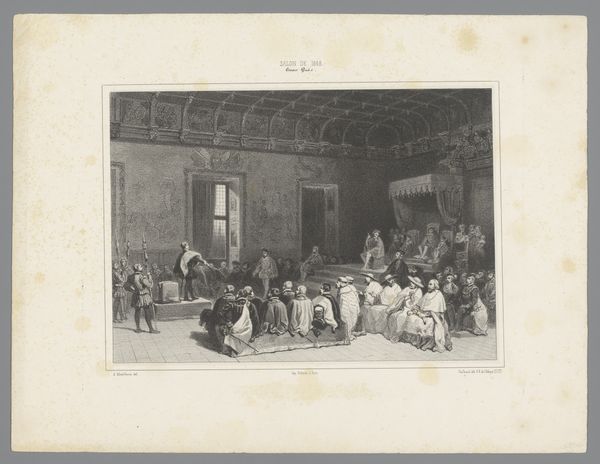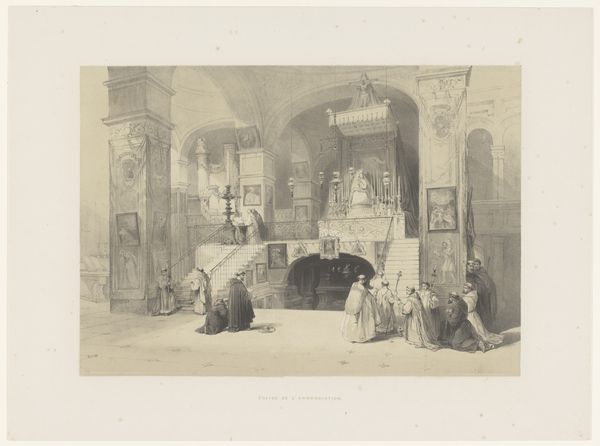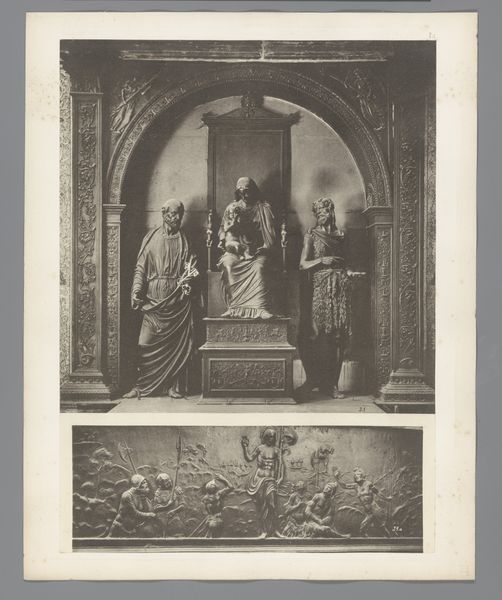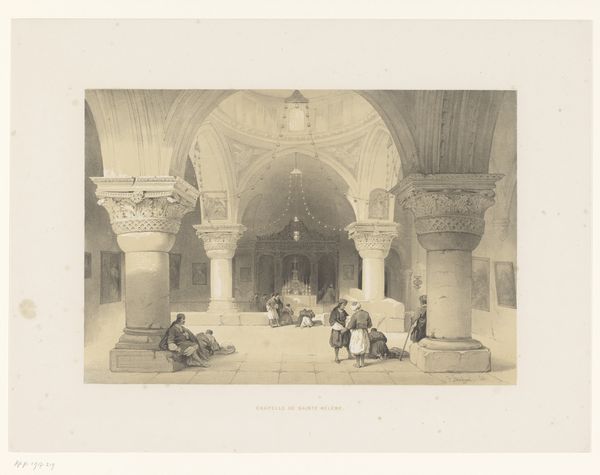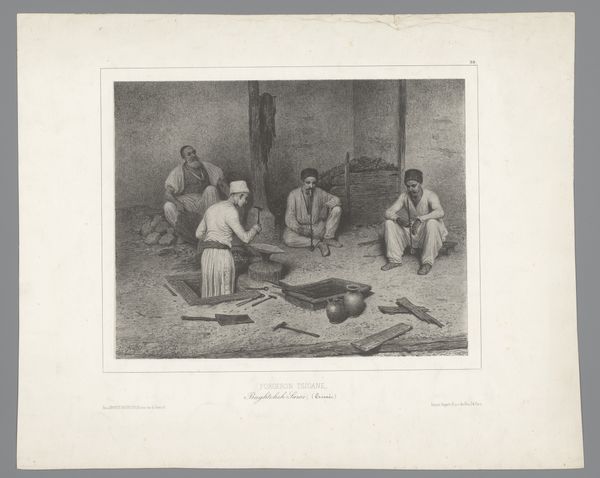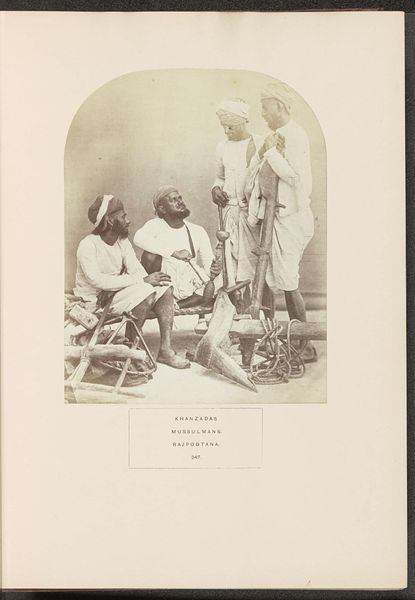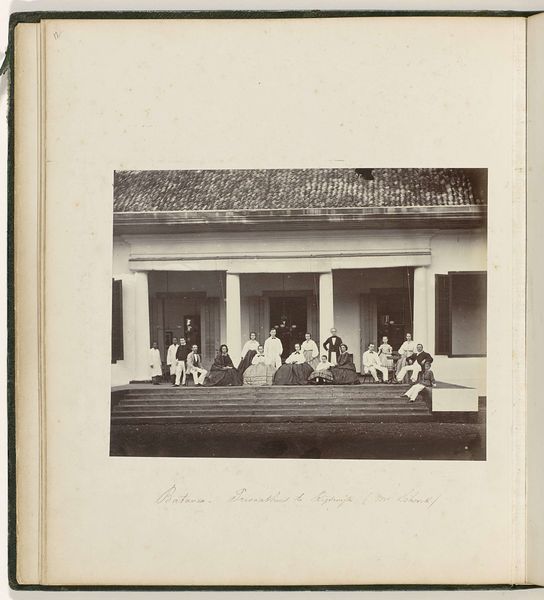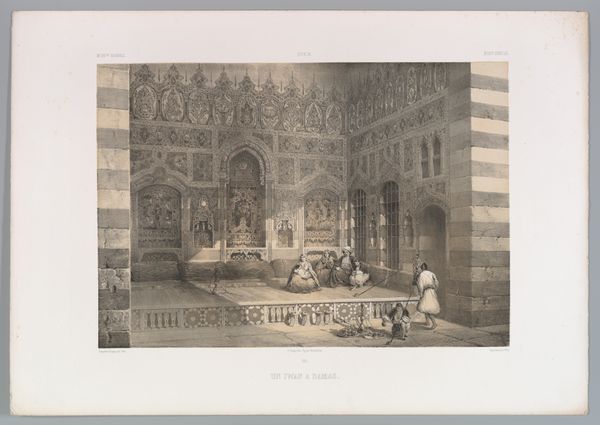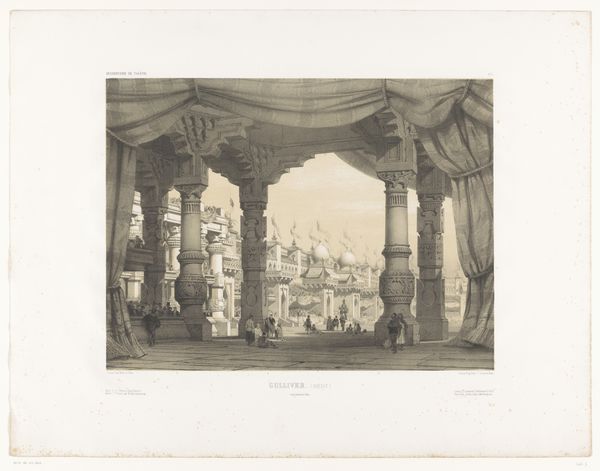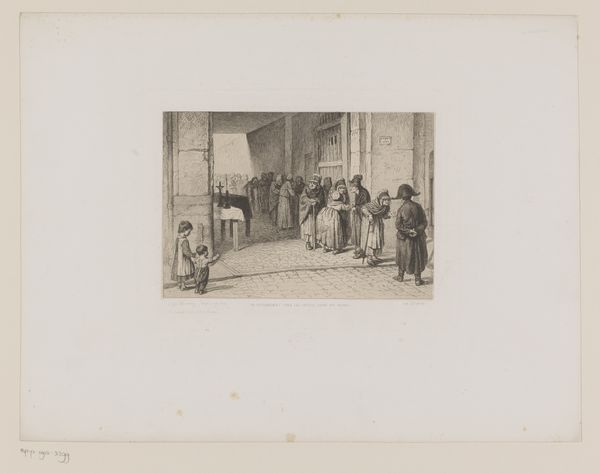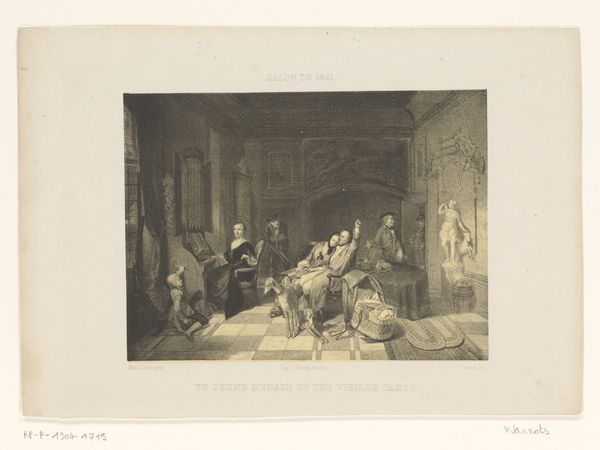
drawing, print
#
drawing
# print
#
ancient-egyptian-art
#
ancient-mediterranean
#
men
#
line
#
history-painting
#
musical-instrument
Dimensions: Image: 6 11/16 × 9 1/8 in. (17 × 23.2 cm) Sheet: 9 3/8 × 12 5/8 in. (23.8 × 32 cm)
Copyright: Public Domain
Curator: This is "Pastime in Ancient Egypt," a print by Charles William Sharpe created in 1876, currently residing at the Metropolitan Museum of Art. Editor: It evokes a sense of grand theatricality, doesn't it? All those figures densely packed into what appears to be a lavishly decorated space, yet the light and shadows give it almost a claustrophobic feel. Curator: I think that density reflects a specific Victorian obsession with Egypt, one that was fuelled by colonial ambition and fantasies of exoticism. The architecture, for instance, while inspired by ancient Egyptian motifs, feels overwrought and designed to reinforce ideas of otherness. It's worth noting the influence of Egyptomania at this time. Editor: Yes, but that staged presentation invites a crucial question: who is included in the ‘pastime’, and for whose benefit? There’s a striking class dynamic visualized in the print—observe how Sharpe distinguishes the seated dignitaries from the labouring servants attending to the performers at the forefront. That feels like more than just historical accuracy, but an articulation of a societal power structure of his own era projected onto ancient Egypt. Curator: Absolutely, the arrangement implies that some participate, while others are merely instruments of leisure. And how much of this perceived ancient culture aligns with real historical records versus imagined exoticisms is really interesting to reflect on. What kind of responsibility do artists carry in perpetuating an incomplete depiction of reality? Editor: This image highlights the political implications embedded within representations of culture. How can we critically re-evaluate images like this, so that art-making actively combats those biases? Perhaps we could start by platforming work which challenges these narratives directly? Curator: By focusing on diverse voices and intersectional histories, it becomes possible to transform visual spaces from echo chambers of dominant ideology to forums for exploring multiplicity and empowering marginalized communities. Editor: Exactly, enabling spaces for artwork and dialogue, fostering reflection, sparking debate and prompting change. Thank you. Curator: A valuable consideration for understanding both art and history.
Comments
No comments
Be the first to comment and join the conversation on the ultimate creative platform.
